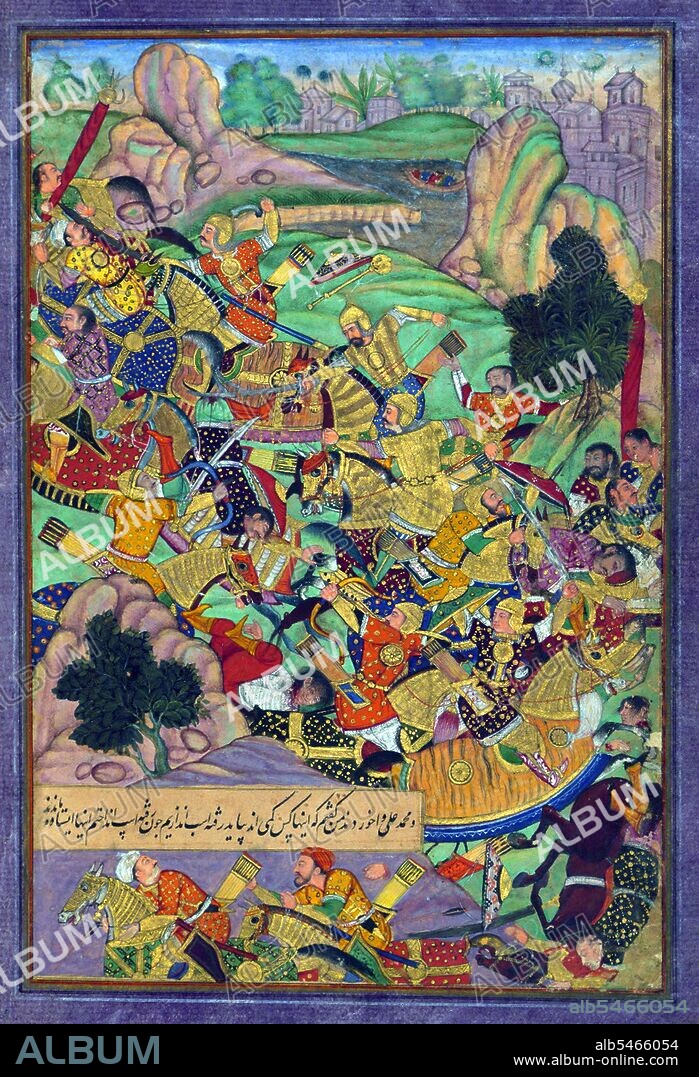alb5466054
India: Scene from the Baburnama. Zahir ud-din Muhammad Babur (1483-1531) the first Mughal Emperor, confronts his enemies

|
Zu einem anderen Lightbox hinzufügen |
|
Zu einem anderen Lightbox hinzufügen |



Haben Sie bereits ein Konto? Anmelden
Sie haben kein Konto? Registrieren
Dieses Bild kaufen

Titel:
India: Scene from the Baburnama. Zahir ud-din Muhammad Babur (1483-1531) the first Mughal Emperor, confronts his enemies
Untertitel:
Siehe automatische Übersetzung
Baburnama (Chagatai/Persian: ???? ????;´, literally: 'Book of Babur' or 'Letters of Babur'; alternatively known as Tuzk-e Babri) is the name given to the memoirs of ?ahir ud-Din Mu?ammad Babur (1483-1530), founder of the Mughal Empire and a great-great-great-grandson of Timur. It is an autobiographical work, originally written in the Chagatai language, known to Babur as 'Turki' (meaning Turkic), the spoken language of the Andijan-Timurids. Because of Babur's cultural origin, his prose is highly Persianized in its sentence structure, morphology, and vocabulary, and also contains many phrases and smaller poems in Persian. During Emperor Akbar's reign, the work was completely translated to Persian by a Mughal courtier, Abdul Rahim, in AH 998 (1589-90 CE). This painting depicts the Mughal emperor Babur with his brave companions confronting their enemies in the mountains of Kharabuk and Pashamun. The text refers to Babur and his few men deciding to charge the enemy.
Bildnachweis:
Album / Pictures From History/Universal Images Group
Freigaben (Releases):
Model: Nein - Eigentum: Nein
Rechtefragen?
Rechtefragen?
Bildgröße:
3450 x 5055 px | 49.9 MB
Druckgröße:
29.2 x 42.8 cm | 11.5 x 16.9 in (300 dpi)
Schlüsselwörter:
ASIEN • ASIEN, KONTINENT • GEMAELDE • GESCHICHTE • INDIANER • INDISCH • KAISER • KOENIG • KONTINENT, ASIEN • KRIEGER • KUNST • KÖNIG • MALEREI • MOGUL KULTUR • MONARCHIE • RECKE (HELD) • ZEITGESCHICHTE
 Pinterest
Pinterest Twitter
Twitter Facebook
Facebook Link kopieren
Link kopieren Email
Email
